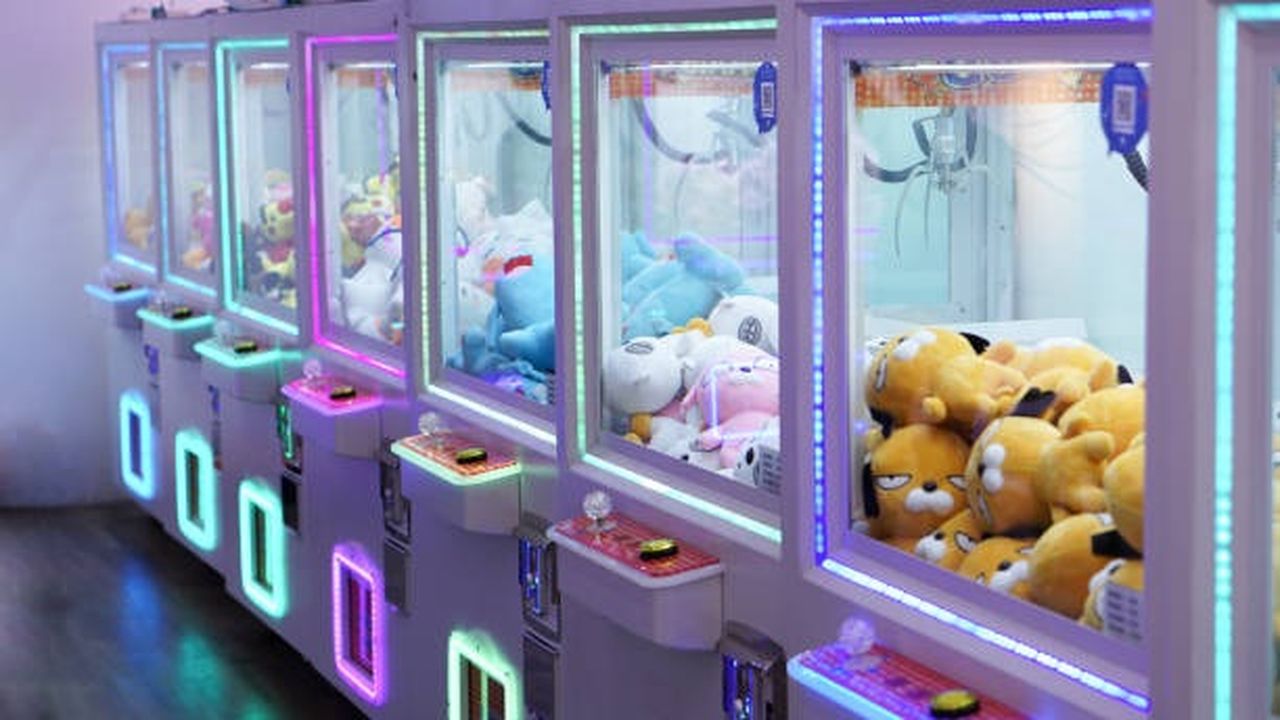The small claw machine, often found in arcades, shopping malls, and entertainment centers, has been a source of joy and frustration for many over the years. Its compact size and colorful appearance make it an attractive game for people of all ages. But what is it about this seemingly simple game that captivates so many? Let's delve into the world of the small claw machine and uncover its charm.
A Brief History
The origins of the claw machine can be traced back to the early 20th century. Initially, these machines were not designed for entertainment but rather as a tool for grabbing products, much like a vending machine. However, as time progressed, entrepreneurs saw the potential for these machines as a form of entertainment. By the mid-20th century, the claw machine had evolved into the game we recognize today, with prizes ranging from stuffed animals to electronic gadgets.
The Mechanics
At first glance, the small claw machine might seem straightforward. Players insert a coin or token, maneuver the joystick to position the claw over a desired prize, and then press a button to lower the claw in an attempt to grab the prize. However, the game's simplicity is deceptive. The claw's grip strength, the arrangement of the prizes, and the machine's timer all play crucial roles in determining a player's success.
The Psychology Behind the Game
One might wonder why such a game, which often results in failure, remains so popular. The answer lies in psychology. The small claw machine employs several psychological tricks:
Intermittent Reinforcement: Occasionally winning a prize keeps players coming back. This unpredictable reward system is similar to how slot machines work, making the game addictive.
Visual Appeal: The bright lights, vibrant colors, and enticing prizes draw players in. The machine is designed to be visually stimulating, ensuring it grabs attention.
Perceived Skill: While there's a significant element of luck, players often believe that with enough skill and practice, they can beat the machine. This perceived control over the outcome encourages repeated play.
The Social Aspect
The small claw machine is not just a solitary game. It often becomes a social activity, with friends cheering each other on or offering advice on how to snag that elusive prize. Winning becomes a shared victory, and even failures can be laughed off together. This communal aspect of the game enhances its appeal.
The Prizes
The variety of prizes in a claw machine can range from plush toys to keychains, and sometimes even more valuable items. These prizes are often colorful and eye-catching, luring players to try their luck. The joy of winning, combined with the tangible reward, creates a memorable experience. For many, the thrill is not just in obtaining the prize, but in the challenge and excitement of the game itself.
The Universal Appeal
The small claw machine transcends age. Children are drawn to the colorful toys and the chance to win a prize, while adults enjoy the nostalgia and the challenge. It's a game that doesn't require any prior knowledge or skill, making it accessible to everyone. Its universal appeal is evident in its global popularity, with claw machines found in various countries, each with its unique twist.
In Conclusion
The small claw machine is more than just a game; it's a cultural phenomenon. Its blend of psychology, social interaction, and the thrill of the chase ensures its enduring popularity. Whether you're a seasoned player or a curious onlooker, the allure of the claw machine is undeniable. It serves as a reminder that sometimes, it's the simple pleasures in life that bring the most joy.


